We the crunched the numbers from our 7th Annual Cramp Survey in June 2023 and the latest findings add further evidence to what we've seen previously...
Exercise-associated muscle cramps affect A LOT of athletes.
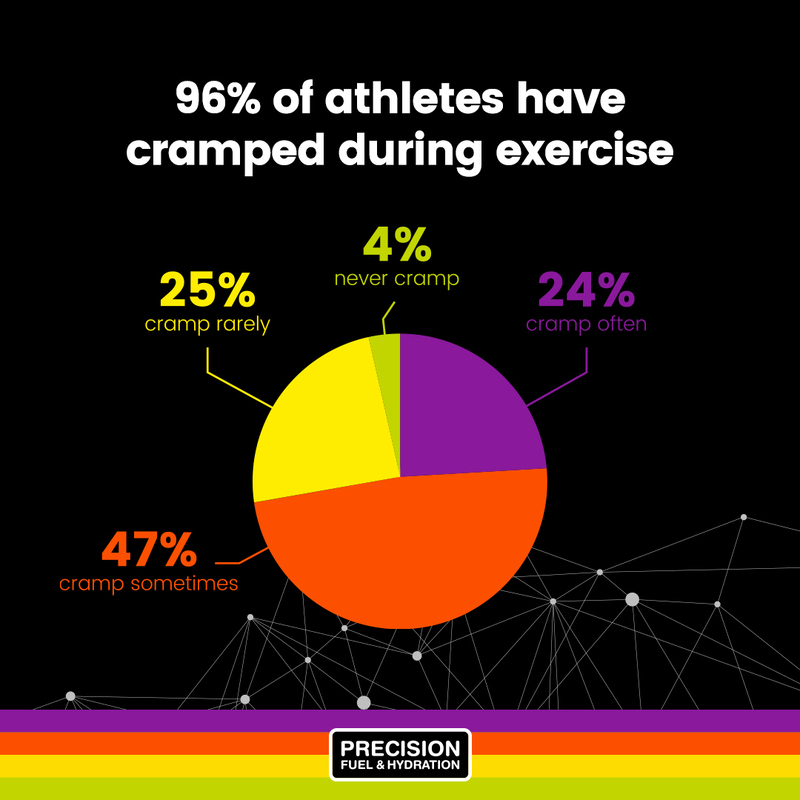
More than 400 of you took the survey in 2023. 🙏 71% reported cramping 'sometimes' or 'often', 25% cramp rarely, and only 4% said that they've never been taken out by the 'Cramp Sniper'.
What's the recipe for cramping?
Historically, two competing theories have dominated the conversation around the likely cause of exercise-associated muscle cramps (EAMC's):
1. Neuromuscular Theory - cramping occurs due to 'electrical misfiring' when your muscles are overworked and fatigued
2. Dehydration Theory - losing a lot of water and sodium through sweating during exercise causes fluid shifts in the body that in turn causes cramps
Whilst both of these theories clearly have some merit, neither captures the nuance of a complex phenomenon that's likely to be caused by a multitude of factors.
Cramping expert Dr Kevin Miller recently proposed a multi-factorial model of EAMC. In our opinion, Kev has hit the nail on the head... 🔨
Cramping is like a recipe - my recipe for cramping might be very different to yours. So, to say that cramping is caused by a single thing is an oversimplification of a complex phenomenon.
The results from our Cramp Survey provide an insight into athletes' different recipe books for cramping... 👩🍳
⌚ Exercise duration
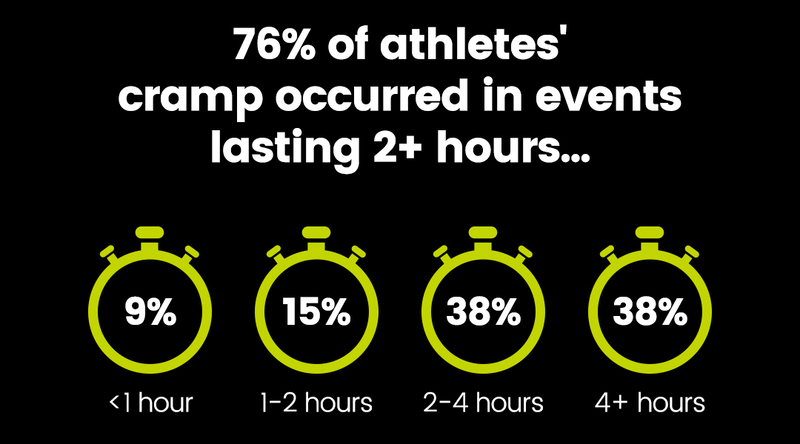
Cramping is more prevalent in longer events.
This makes intuitive sense because muscles will become more fatigued and damaged the longer you go on, and there's a greater chance of dehydration and electrolyte imbalance occurring. These are two ingredients that seem to be high on most athletes' cramping recipe cards.
🏊♂️🚵♂️ 🏃♀️Type of sport
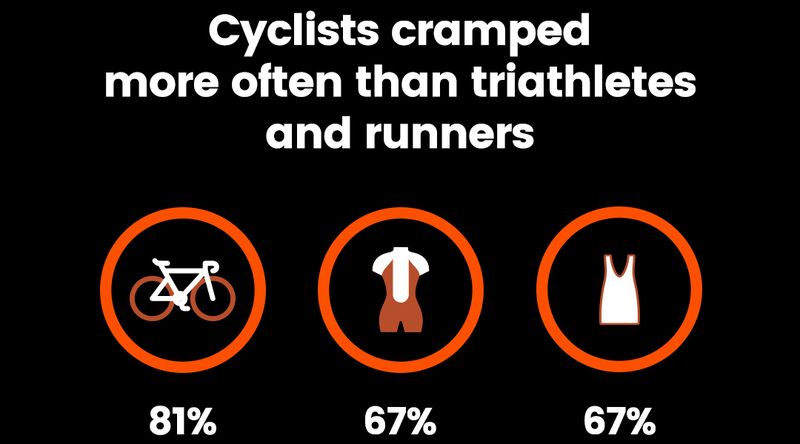
More cyclists report cramping up 'sometimes' or 'often'.
This supports results from previous editions of the survey where cyclists appeared to cramp up more frequently than runners and triathletes.
We have a few working hypotheses for why this might be, but no evidence-based answer. Could it be that cyclists are made of tougher stuff and are more willing to push their muscles to the point of failure? 😜
💦🧂 Sweat loss
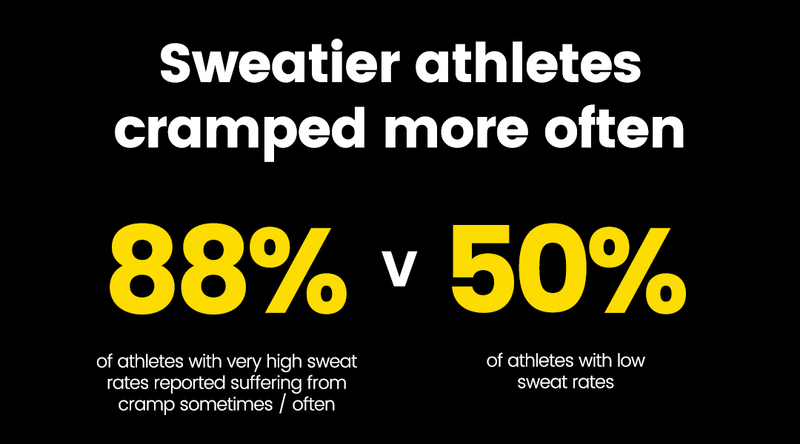
Athletes with high sweat rates (i.e. those who lose lots of fluid through sweat) seem to cramp more often.
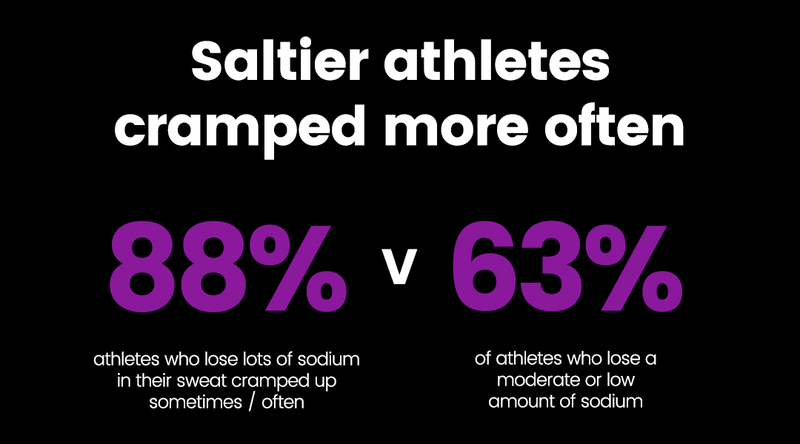
And it also seems that losing more sodium in your sweat can be part of the recipe for cramping too.
😎 Hot and humid conditions

Cramping is worse in heat and humidity.
One potential reason for this is that hot and humid conditions increase sweat and therefore sodium losses, which make fluid and electrolyte imbalances more likely.
It's also worth recognising that core temperatures rise in hotter environments, causing your body to divert blood toward the skin for cooling.
This diversion means less blood flows to the muscles, putting them under more stress, which could plausibly contribute to the risk of EAMC's.
A menu for defeating cramp 🍽️
Most athletes seem able to push through their issues with cramp, but it's proven to be a race-ending problem for 14%.
Additionally, 76% of those who did push through said it had a negative impact on their finishing time.
Whilst there's often no single 'magic bullet' to help you defeat cramp, the survey results highlight a menu of potential solutions that have proven successful for a number of athletes...
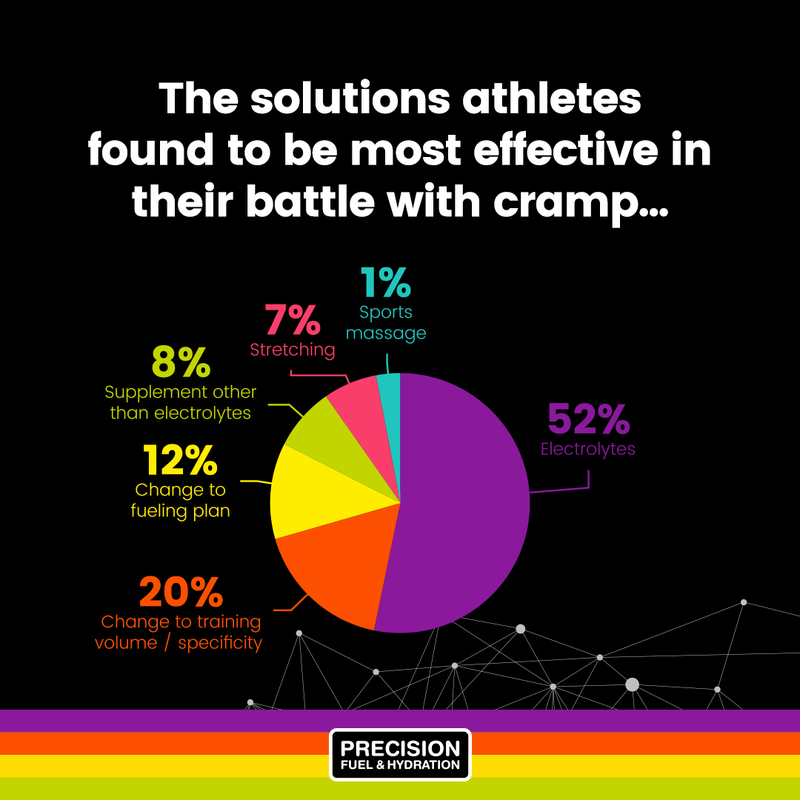
A menu for defeating cramp...
1. Increase training
A fifth (20%) of athletes found increasing training volume or specificity had the most positive impact on their cramping issues.
It's worth ensuring you're doing enough specific training to ensure your body is fit enough for the rigours of your sport, whilst avoiding the dangers of overtraining.
2. Increase carb intake
More than a tenth (12%) of athletes said that increasing their carb intake during exercise helped them overcome cramps.
Carbohydrate is the main source of fuel used by your body during endurance exercise. So, consuming sufficient carbs per hour during exercise will play a part in helping delay your time to fatigue.
Furthermore, carbs have been shown to increase the absorption rate of drinks into your bloodstream, and therefore help you hydrate faster.
3. Alternative supplements
8% believe supplements like pickle juice, wasabi or mustard had a positive impact on EAMC's.
It's been suggested that these supplements can create a 'jolt' reaction that disrupts the nerve signals that are causing cramp. They're not the tastiest addition to a fueling strategy, but Andy explains why they might work for some.
4. Stretching
7% said that stretching helped them overcome their cramps.
If you're looking to enhance your approach to stretching in order to overcome chronic lower leg injuries, Sports Injury Specialist Lawrence van Lingen shares some key movement exercises and stretches.
5. Sports massage
1% of athletes said sports massage helped alleviate their cramping issues.
Not everyone's 'fortunate' enough to have British Triathlon's Sports Therapist, Kev James, come into their office and deliver an hour of torture massage each week 🙄. You might want to consider an appointment with your own local sports massage therapist or explore the efficacy of alternative recovery tools.
And the pièce de résistance...
6. Using electrolytes
More than half of athletes (52%) said that electrolytes had the most positive impact on their EAMC's.
Of course, some people who took our survey will have found out about PF&H because they were looking for stronger electrolytes to resolve their issues with cramping in the first place, so are perhaps more likely to sing the praises of sodium.
Still, 77% of athletes who've cramped in the past and used our stuff said that PH electrolytes were the ingredient that had the most positive impact on their cramping issues... 🎤
